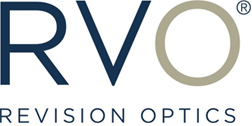INDICATIONS FOR USE AND SUMMARY OF IMPORTANT INFORMATION FOR THE RAINDROP® NEAR VISION INLAY
CAUTION: Federal law restricts this device to sale by or on the order of a physician.
ATTENTION: Please see Professional Use Information and/or Patient Information Brochure for a complete list of Potential Risks, Warnings and Precautions.
INDICATIONS FOR USE: The Raindrop® Near Vision Inlay is indicated for intrastromal implantation to improve near vision in the non-dominant eye of phakic, presbyopic patients, 41 to 65 years of age, who have manifest refractive spherical equivalent (MRSE) of +1.00 diopters (D) to -0.50 D with less than or equal to 0.75 D of refractive cylinder, who do not require correction for clear distance vision, but who do require near correction of +1.50 D to +2.50 D of reading add.
SUMMARY OF IMPORTANT INFORMATION
The Raindrop® Near Vision Inlay may not eliminate the need for reading glasses.
Implantation of the Raindrop® Near Vision Inlay has the potential to cause vision and eye symptoms; dry eyes; decreased vision; decreased contrast sensitivity; problems with the cornea, such as clouding, thinning, scarring, and inflammation; eye infection; increased eye pressure; and the need for another eye surgery, such as removal or replacement of the inlay, or other treatment.
You should not have the Raindrop® Near Vision Inlay implanted if you have severe dry eye; have an active eye infection or active inflammation; have signs of corneal disease characterized by general thinning and cone-shaped protrusion in the center of the cornea (keratoconus) or keratoconus suspect; have abnormal features of the outer part of the eye (cornea) to be implanted; have active abnormal immune response (autoimmune) or connective tissue diseases; do not have enough corneal thickness to safely have the procedure performed; have a recent herpes eye infection or problems resulting from a previous infection; have uncontrolled buildup of high pressure in the eye (glaucoma); have uncontrolled high blood sugar (diabetes).
There are non-surgical alternatives to the Raindrop® Near Vision Inlay, which include reading glasses or contact lenses.
Before having the Raindrop® Near Vision Inlay procedure you should have a complete eye examination and talk with your eye care provider about alternative treatments, potential benefits, complications, risks, healing time, and any other concerns you have about having the procedure.
IMPORTANT: For full safety information please click to view our Patient Information Brochure (US), Professional Use Information Brochure (US), Raindrop® Near Vision Inlay Instructions for Use (US), Inlay Inserter Chuck Handle Instructions for Use (US), Raindrop® Near Vision Inlay Instructions for Use (OUS), Inlay Inserter Chuck Handle Instructions for Use (OUS), talk with your doctor, or call Raindrop Customer Support at 1-866-934-6592.

